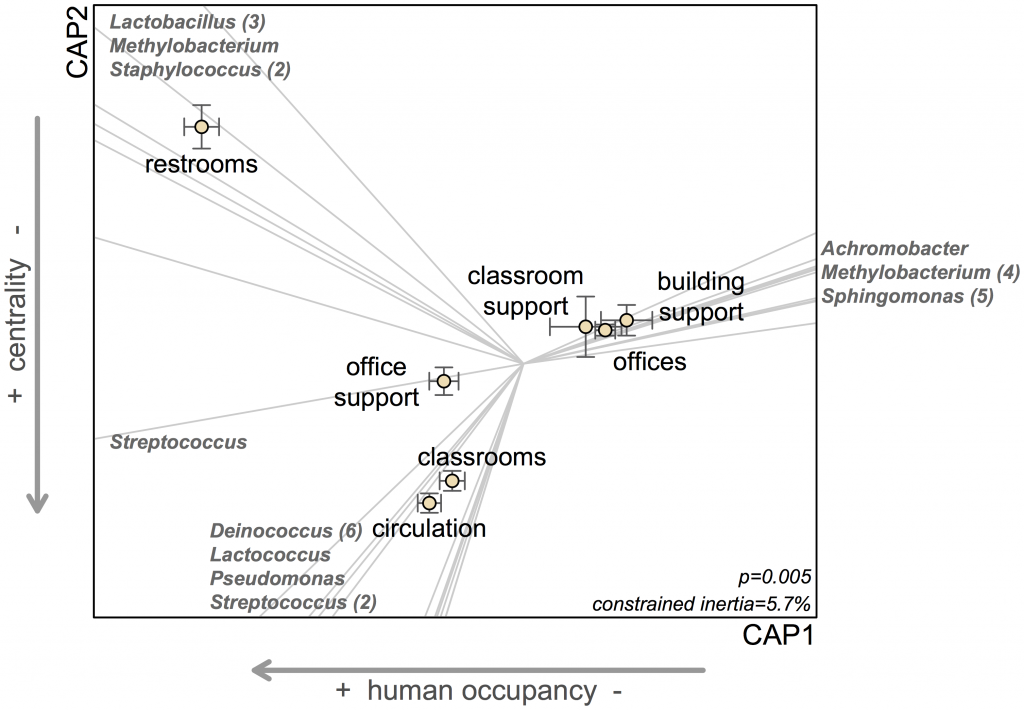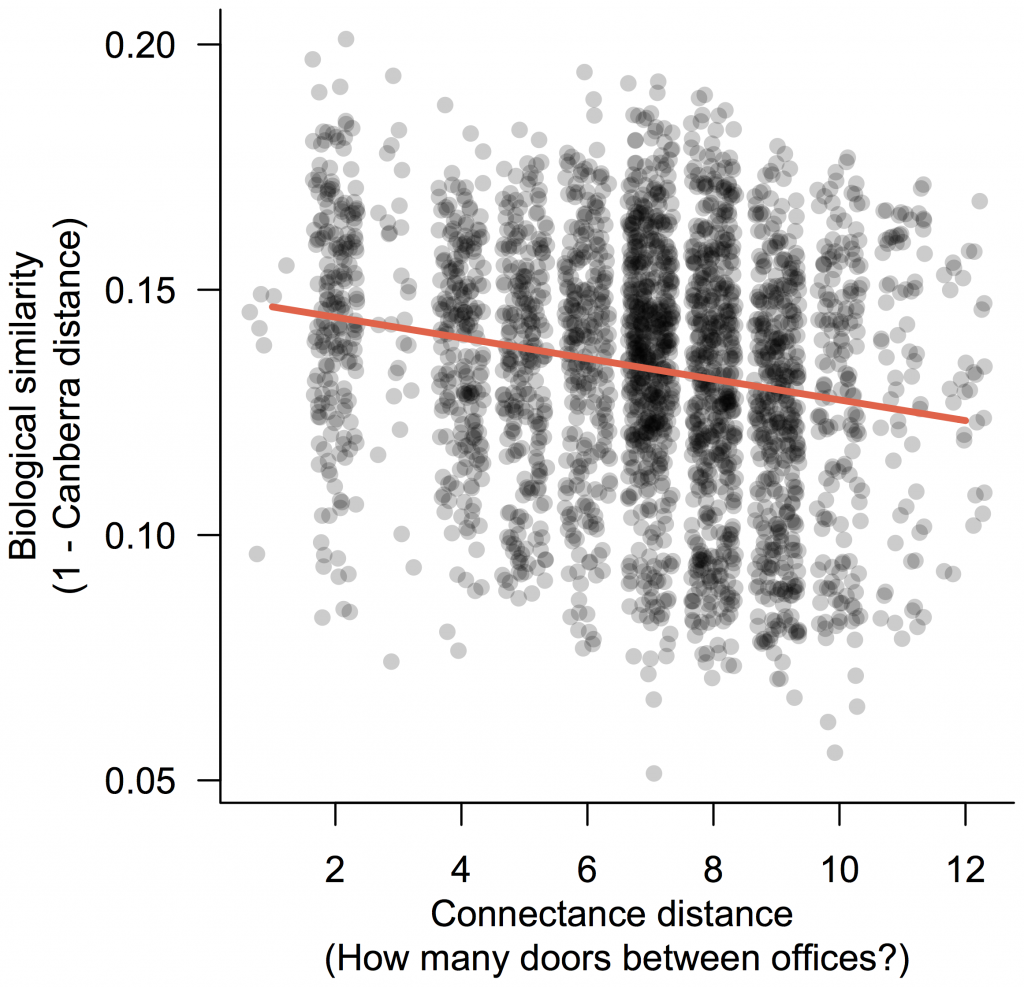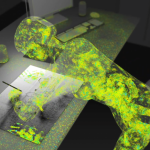The built environment is its own ecosystem, and architectural features in the indoor environment can change those ecosystems and the organisms living there. Bathrooms and kitchens can act as sources of water or natural resources, the availability of which affects microbial survival, and the spatial design of the building and flow of air and occupants can change how and which microorganisms are moved throughout the building. The amount of time humans use a space, or what they use it for can also alter the indoor microbiome. Sampling multiple locations within a single building allows us to get a higher-resolution picture of “who” can be found in a building and where, which can help us understand why.
We sampled 155 rooms from a building on the University of Oregon campus – Lillis Hall- shortly after its completion and opening. Lillis is a four-story building, with a combination of classrooms, offices, hallways, bathrooms, and open-area spaces, and which features a combination of natural (open window) and mechanical ventilation strategies. Different space types within the building hosted different bacterial communities; classrooms were different from hallways which were different from offices and so forth (Figure 4). Rooms which were physically connected shared more bacteria than rooms farther apart- indicating that microbes are dispersed into and our of spaces regularly (Figure 6).

Figure 4. Dust communities within a building cluster by space type and are strongly correlated with building centrality and human occupancy. Points represent centroids (±SE) from distance based redundancy analysis (DB-RDA). Space types hold significantly different communities (P = 0.005), though this is driven primarily by restrooms. Bacterial OTUs that have the strongest influence in sample dissimilarities are shown at the margins; numbers in parentheses indicate multiple OTUs in the same genus. Centrality (along y-axis) represents network betweenness and degree; human occupancy (along x-axis) represents annual occupied hours and human diversity. All four correlates (simple linear models as a factor of ordination axis) are significant along their respective axes (all P<0.001).

Figure 6. Offices in Lillis Hall show a strong distance-decay pattern. When only considering a single space type, biological similarity (y-axis; 1 – Canberra distance) decreases with connectance distance (number of intermediate space boundaries [e.g., doors] one would walk through to travel the shortest distance between any two spaces) (Mantel test; R = 0.189; P = 0.002). The same pattern was also observed at the whole-building scale (not shown; Mantel test; R = 0.112; P = 0.001).
Video
Press
Architecture May Influence Which Microbes Surround You
Greg Miller, Wired, 27 Feb 2014
How Architecture Could Shape Your Microbiome
Shaunacy Ferro, Fast Company, 04 Feb 2014

Building Design Influences Bacterial Growth
Brooke Borel, Popular Science, 29 Jan 2014
- “Changing your office layout affects its (bacterial) culture” // Quartz, Rachel Feltman
- “A Building’s Design and Shape it’s Microbiome” // Futurity, Jim Barlow-Oregon
- “How the Architecture of Our Buildings Shapes the Germs Around Us” // Gizmodo, Kelsey Campbell-Dollaghan
- “Architecture May Influence Which Microbes Surround You” // Wired, Greg Miller
- “Bacteria by Design” // The Scientist, Jef Akst
- “Architecture and Your Microbiome” // The Atlantic, Alexis C. Madrigal
- “Studying – not wantonly killing – the microbes around us and the rise of the “microbiology of the built environment” // microBEnet Blog, Jonathan Eisen






